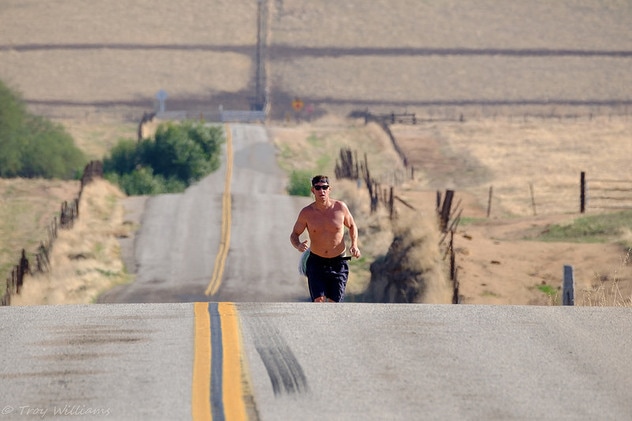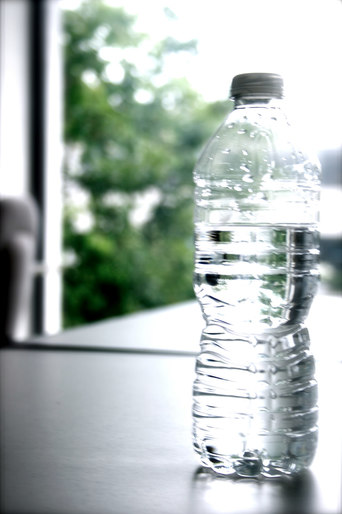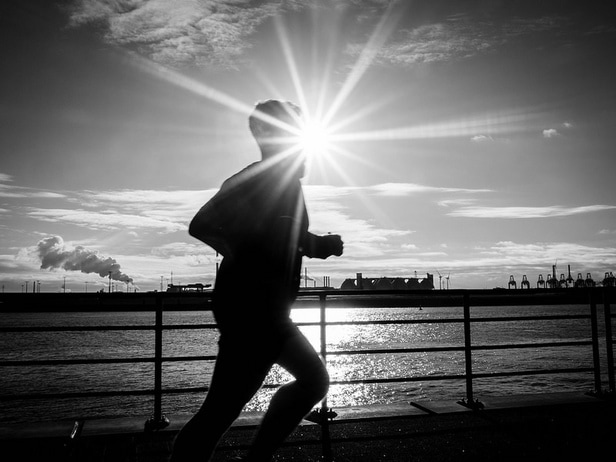|
Summer is upon us and if you’re training then you are probably feeling the heat (and humidity). Heat related concerns like Heat Exhaustion and Dehydration are not as common in training sessions that are less than 1 hour in length. Here are a few tips on how to get through your summer training. Before we can talk about hydration for 1 hour + training sessions, we need to talk about Sweat Rate. It’s a good idea to perform a sweat test for each of the sports you are training in (and yes, you actually do sweat while swimming). What is a sweat test you ask? It’s a simple test to determine how much you sweat in one hour in a given activity. Knowing this will allow you to formulate a plan to stay hydrated during training. The test consists of weighing yourself (preferably naked) before your activity, training for 1 hour, recording the amount of fluid intake if you consume any during activity, then toweling dry and weighing yourself again (naked). Your pre-activity weight minus post activity weight plus any fluid consumed is your 1 hour sweat rate for that activity (record temperature, humidity, and effort level for reference). Example: Pre-Activity Weight: 152.2 Bike Ride 1 hour (warm up, intervals, cool down) Consumed 8 ounces of water during activity Post Activity Weight: 151.2 152.2 – 151.2 = 1 pound or 16 ounces 16 ounces + 8 ounces = 24 ounce sweat rate So now you know for that temperature, humidity, and specific activity that you sweat out 24 ounces every hour. In this example, you now know you would need to consume 24 ounces of fluid per hour to keep properly hydrated in a similar training session.
A great way to beat the heat is to start your training early in the morning. Once the sun comes up temperatures climb quickly. It’s not always fun or easy to get up early, but being able to get a couple of hours done before the sun rises might help you get that 3-4 hour ride/run completed. If you decide to take advantage of those pre-sun hours make sure to make yourself visible with reflective clothing and/or lighting. Late evening runs are another way to avoid the sun. However, it sometimes takes temperatures well into the late evening to fall. So while the sun isn’t blazing down on you, it might still be hot out. Early or Late is still better than mid-day runs and rides.
If a mid-day training session can’t be avoided then try to pick training routes that are shady. Trail runs are a great way to help get out of the direct sunlight and heat of the day. Another idea is to drive out into the country and start your bike ride on 2 lane country roads that tend to have more tree coverage. If these options aren’t available then consider moving indoors to the bike trainer or treadmill on those extremely hot days. Proper clothing can go a long way to help keep you cooler in the heat of summer. Try to wear light colored sweat wicking materials. Hats, visors, and arm sleeves can also be considered. Dictionary.com’s definition of Heat Exhaustion is; a condition characterized by faintness, rapid pulse, nausea, profuse sweating, cool skin, and collapse, caused by prolonged exposure to heat accompanied by loss of adequate fluid and salt from the body. When training in hot conditions you should be aware of the warning signs of heat exhaustion. If you start to experience any of the signs, you need to stop your training session and get your body re-hydrated and cooled down. If you try to push through, you could end up with Heatstroke which is defined as; a condition marked by fever and often by unconsciousness, caused by failure of the body's temperature-regulating mechanism when exposed to excessively high temperatures. Heatstroke is extremely dangerous and will usually involve a trip to the Emergency Room. Your post training cool down and recovery priority should be re-hydrating. Don’t try to guzzle a bottle of water and think you’re re-hydrated. It’s better to re-hydrate slowly and consistently for several hours after your workout. Taking a cool (not cold) shower is a great way to help lower your body’s core temperature after a hot weather training session. You definitely need to respect the evil twins Heat and Humidity. But you can successfully train through the summer heat if you take precautions. Yes, your pace will be and needs to be slower. But when the first cool weather of Fall comes you will be a stronger athlete after battling through the summer heat! Coach Jay
0 Comments
Leave a Reply. |
What's New?
Check in often for upcoming events, news, recipes and more. Archives
August 2022
Categories
All
|
Proudly powered by Weebly




 RSS Feed
RSS Feed